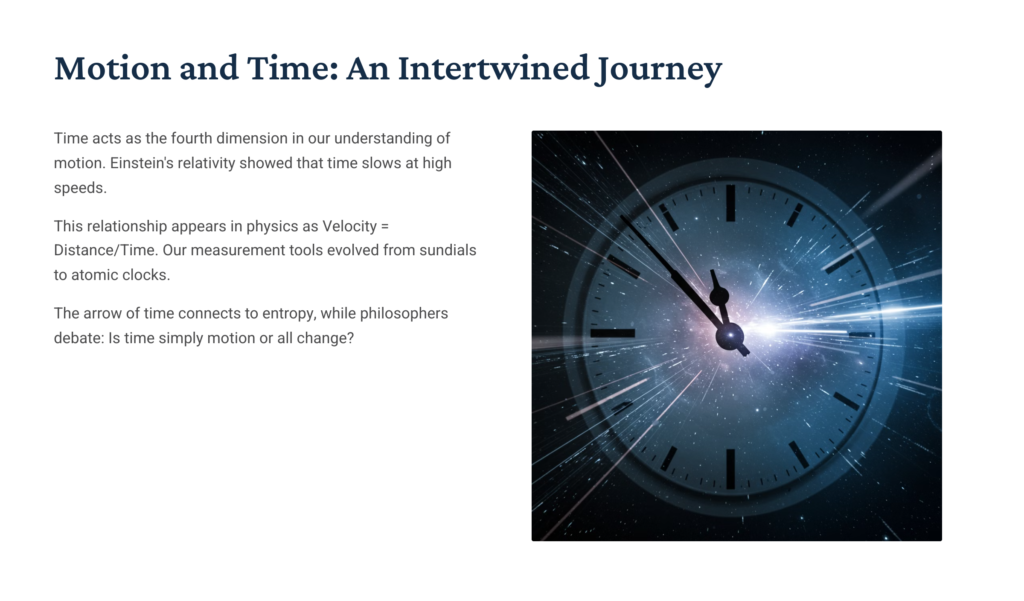Question
Q12. Starting from point A, Krati moves along a rectangular path ABCD
as shown in the image. She takes 2 minutes to travel each side. Plot a distance-time
graph and explain whether the motion is uniform or non-uniform.
Image Description
Rectangular path shows a rectangle labeled ABCD.
The top side AB is 8 m, the right side BC is 6 m,
the bottom side CD is 8 m, and the left side DA is 6 m.
Krati starts at point A and moves around the rectangle, taking exactly
2 minutes to travel each of the four sides.
Solution & Explanation
Step 1: Calculate Krati’s speed for each side:
- AB (8 m): 2 min → speed = 8 m / 2 min = 4 m/min
- BC (6 m): 2 min → speed = 6 m / 2 min = 3 m/min
- CD (8 m): 2 min → speed = 4 m/min
- DA (6 m): 2 min → speed = 3 m/min
Step 2: Plotting a distance-time graph (distance from start point A):
- 0 to 2 min: distance from 0 to 8 m (slope = 4 m/min)
- 2 to 4 min: distance from 8 m to 14 m (slope = 3 m/min)
- 4 to 6 min: distance from 14 m to 22 m (slope = 4 m/min)
- 6 to 8 min: distance from 22 m to 28 m (slope = 3 m/min)
The graph consists of four line segments, each with a different slope (4 m/min or 3 m/min).
Step 3: Determine if the motion is uniform or non-uniform:
Since Krati’s speed changes from 4 m/min to 3 m/min after every 2 minutes,
the overall motion around the rectangle is non-uniform.
Within each side, the motion could be viewed as uniform (constant speed for that side),
but from side to side the speed varies.
Answer: Krati’s motion around the entire rectangular path is non-uniform.



